
Over the years, various Coast Guard cutters have celebrated Christmas either in port or at sea. Being away from home and family no doubt left a void as evidenced by letters written home. Commanding officers allowed the observance of Christmas with a dinner with all the trimmings. Some men would go ashore and celebrate Christmas while on liberty; others chose to remain on board. Oftentimes, cutter logbooks would say “omitted general quarters on account of holiday” as the only mention of any Christmas celebrations. It was just another day on board.
The idea of Christmas at sea has been synchronous with the calendar itself for as long as time has existed. On December 25, 1917, the United States was in the midst of World War I. For six Coast Guard cutters assigned to convoy duty in the war zone, Christmas was just another day at work, but each had its own Christmas celebration. While there is no known official documentation about the observance of the holiday on Tampa, other the fact that the cutter was moored at Plymouth, England, letters written home by its crew mention Christmas here and there. For instance, Captain Charles Satterlee was “glad not to have to spend the holiday at sea,” being on leave somewhere in England. First Lieutenant John Farrell McGourty wrote to his wife about his excitement over receiving her Christmas package.
Tampa was the only Coast Guard cutter that was torpedoed and sunk, off the coast of England, on September 26, 1918. All 130 passengers and crew lost their lives.
Another cutter, Ossippee, moored at Base Nine, Gibraltar, assisted with a submarine chaser that had broken down Christmas morning. Yet, there was a glimmer of hope – the celebration of the birth of Jesus – as the crew of Ossippee, sat down to a Christmas dinner. As 23-year-old Seaman Atlee Burpee Donaghy, of Palmyra, New Jersey, described it in his diary (which is now in the Coast Guard Historian’s Office):
At 10 am, we had our Xmas gifts distributed. Each received a bay of bull, two sweets, two gum, two bars of chocolate, a box of matches, and a package of matches and toothpaste. Later on in the day they gave out soap, shaving soap, brushes, and writing paper.
For dinner, we had roast turkey, dressing, sweet potatoes, asparagus tips, mince pie, nuts, B & B [bread and butter], tea. [There] was plenty for everyone…plenty of song and music. They march [sic] around the deck for a little airing, then about 8 o’clock we [lit] up the foretop with colored electric bulbs and had a revue on the [forecastle] until 8:30. Then we piped down, everybody [was] happy as we had no interruptions for the officers.
Shipboard Menus
The Coast Guard Historian’s Office recently unearthed several shipboard Christmas menus in its Archives and Special Collections. They are few, but rather colorful and provide insight into a bright spot in an otherwise monotonous lifestyle at sea.
Champlain, 1929
Commissioned in January 1929, Champlain served on International Ice Patrol duty for much of its career. In January 1935, Champlain took survivors from a collision off the coast of Sea Girt, New Jersey, and transported them to the nearby Marine Hospital. The vessel was decommissioned and transferred to the Royal Navy in 1941.
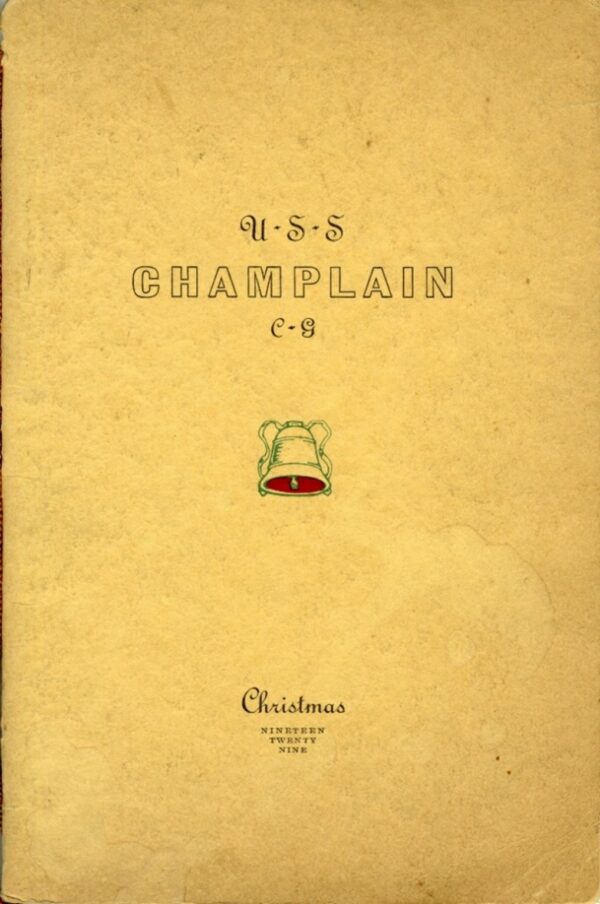
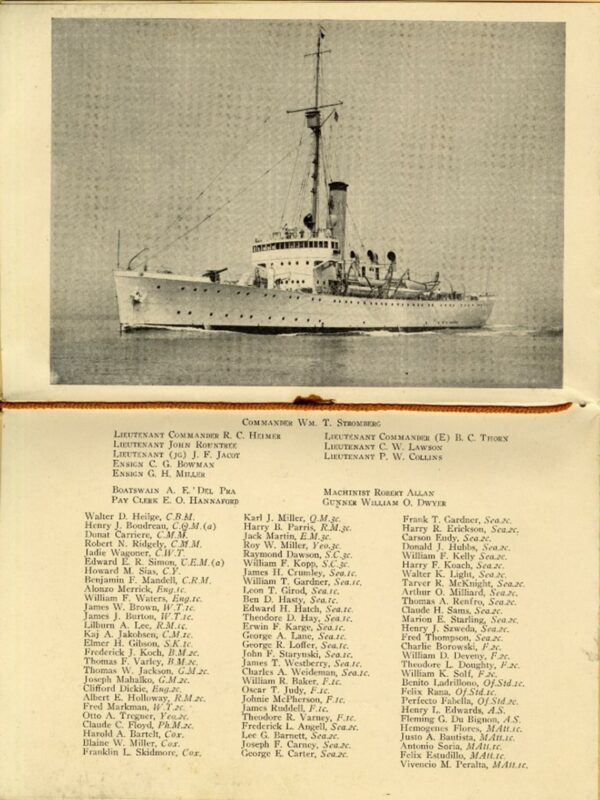

Shaw, 1929
During Prohibition, the Shaw was homeported at New London, Connecticut. Shaw was launched in 1916 and served in the Navy until March 1926, when it was transferred to the Coast Guard for Prohibition duty. It was decommissioned in 1933 and scrapped the following year. The roster in the 1929 Christmas menu includes a young Ensign Edwin J. Roland, a gunnery officer who became the Commandant of the Coast Guard in 1962.
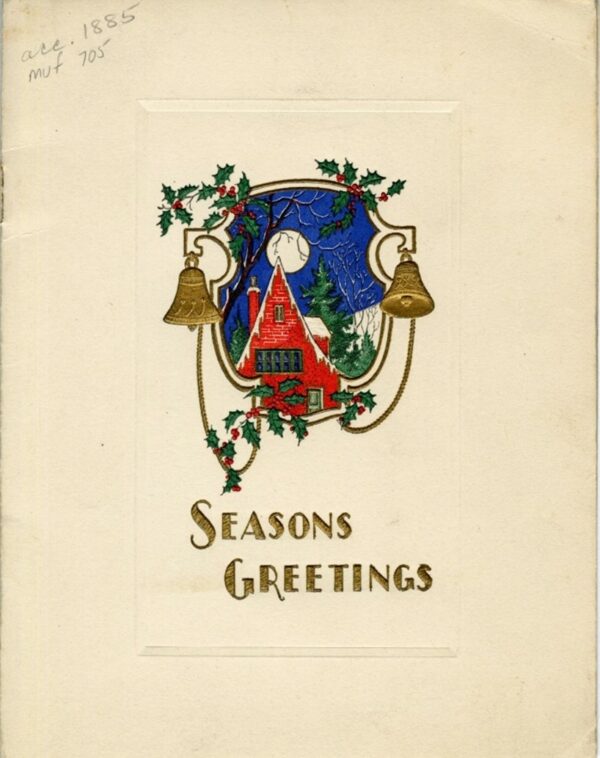
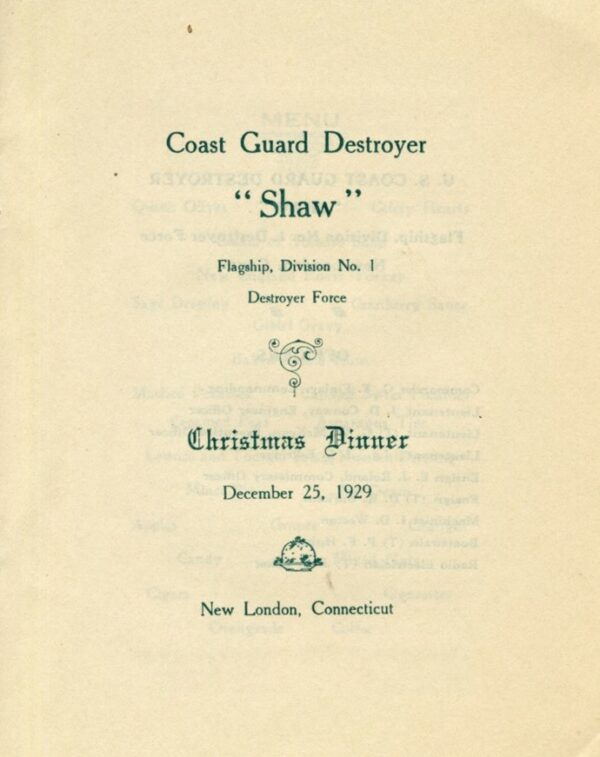
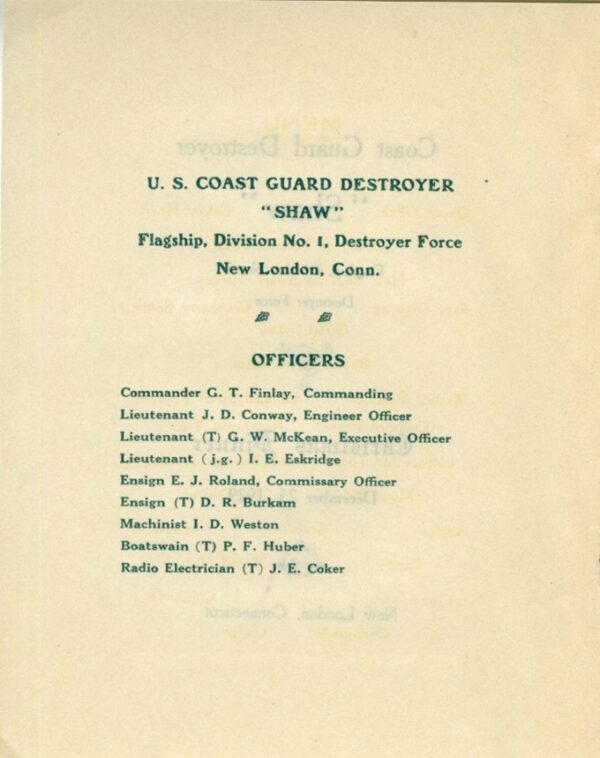
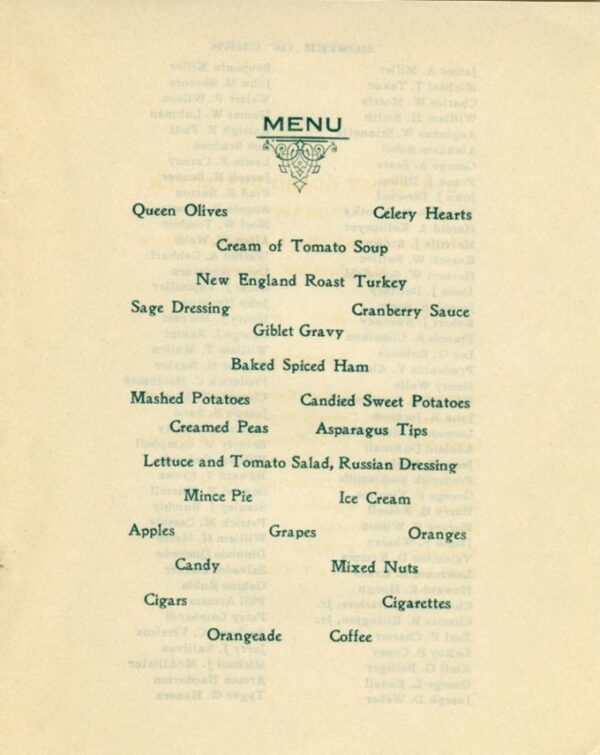
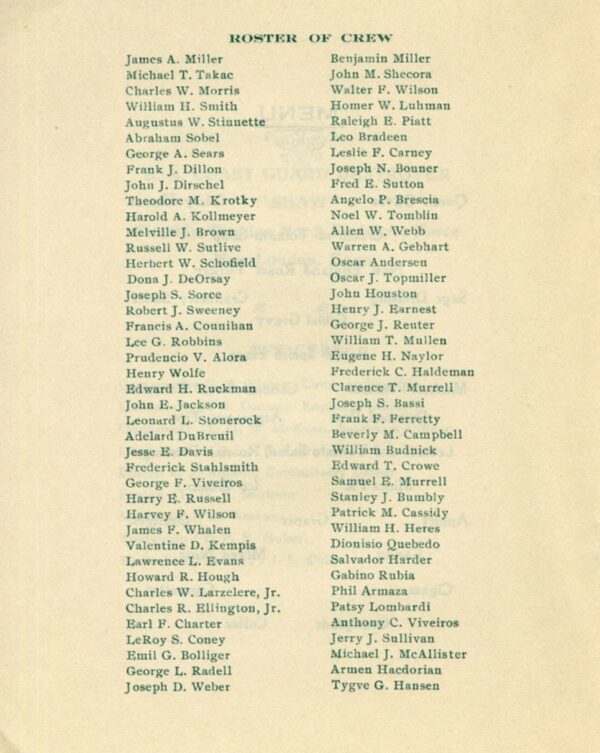
Haida, 1932
Haida was commissioned in October 1921. Homeported at Seattle, Washington, Haida served on the Bering Sea Patrol and, later, on Prohibition duty, but with few operational highlights. In 1924, the cutter assisted with the U.S. Army’s historic Around the World flight. Sold in 1948, it was scrapped in 1951. At the time of the 1932 Christmas dinner, its logbooks only say “observed holiday routine” for the December 25th log entry.
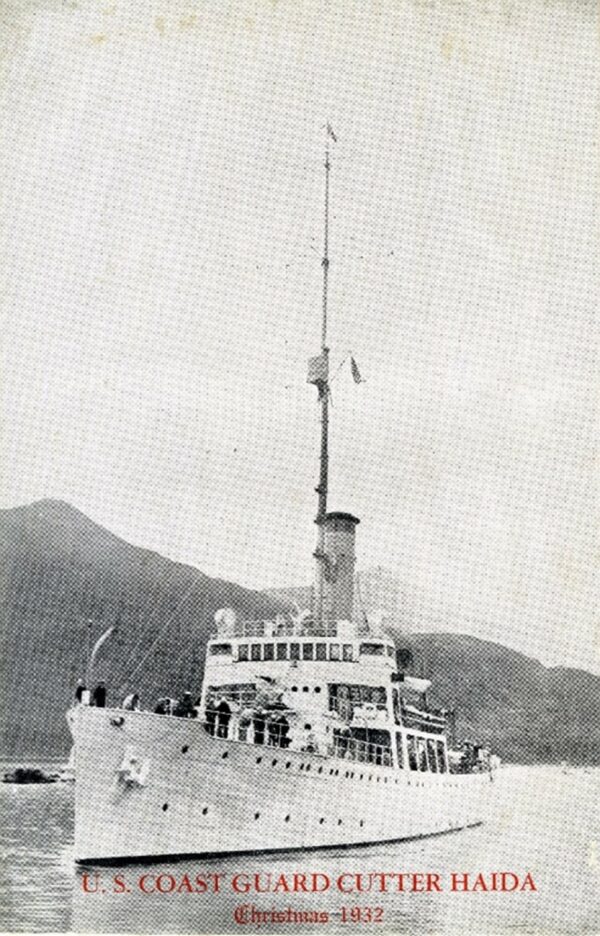
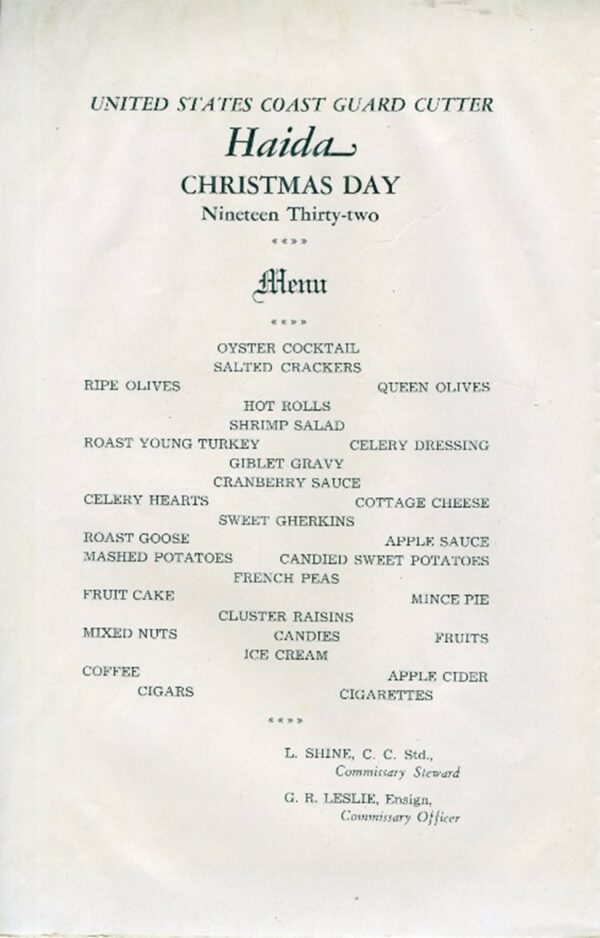
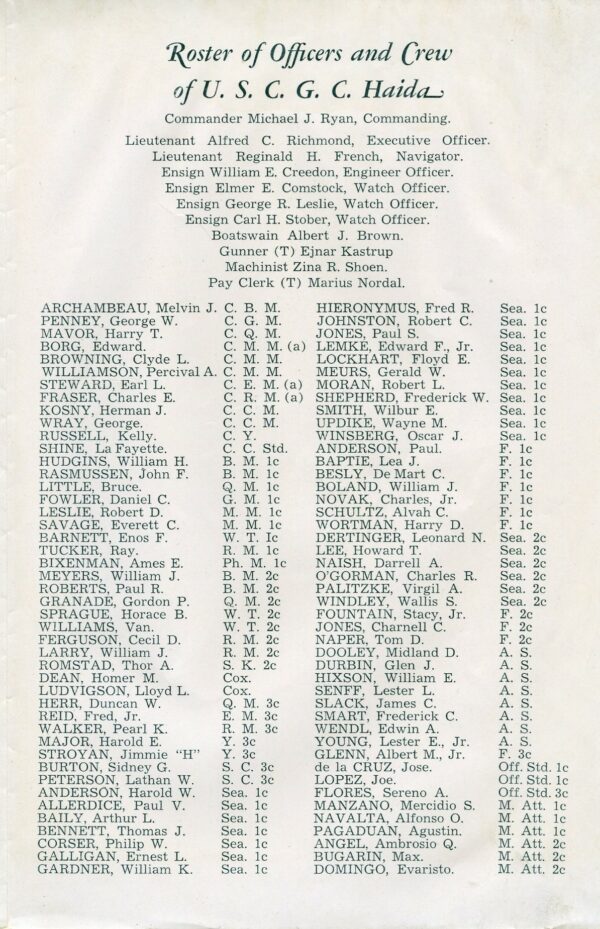
Daphne, 1933
Launched in January 1932, Daphne was a patrol boat assigned to the New York Division as part of the Special Patrol Force. Homeported at Stapleton, Staten Island, New York, the vessel enforced Prohibition laws. In June 1932, it became known for its role in the “North Atlantic Vegetable War.” Daphne tried to apprehend Gonniff, a Canadian vessel, about 81 miles off the coast of New York City, but was unsuccessful, so the two vessels began firing vegetables at each other!
Daphne was transferred to the West Coast in 1933 and stayed there until the end of Prohibition. In 1934, Daphne escorted Al Capone to Alcatraz Prison in San Francisco and also patrolled the port of San Francisco during World War II. The cutter was decommissioned in 1946 and sold in 1954.
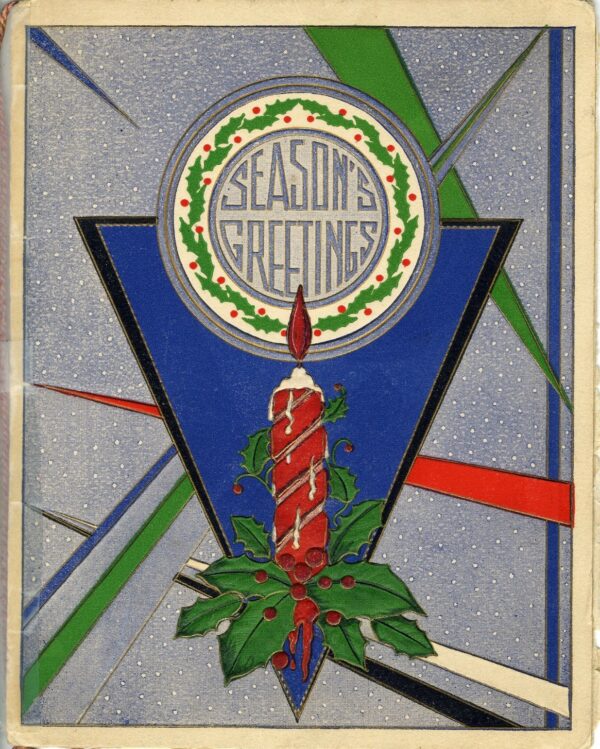
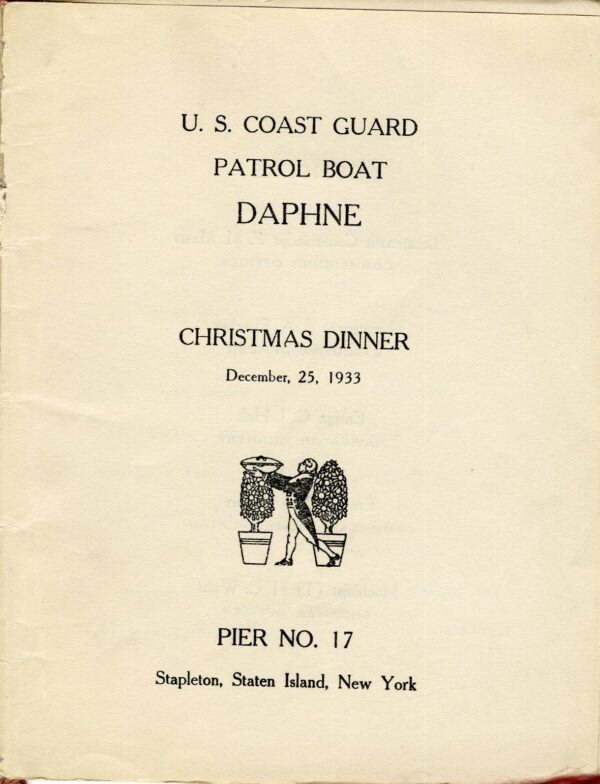
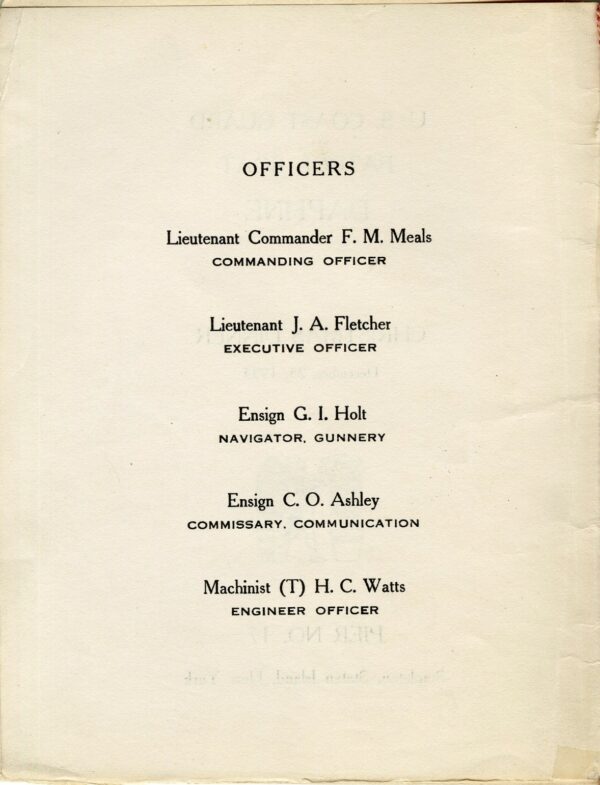
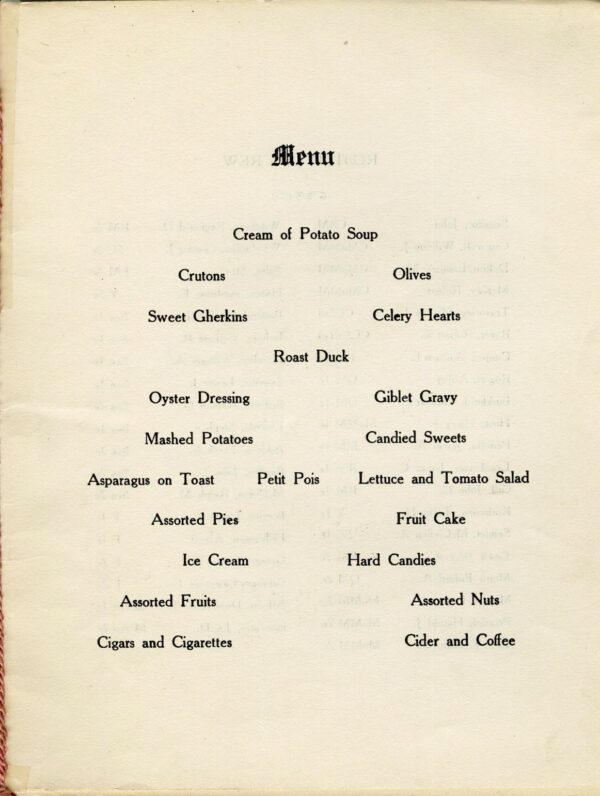
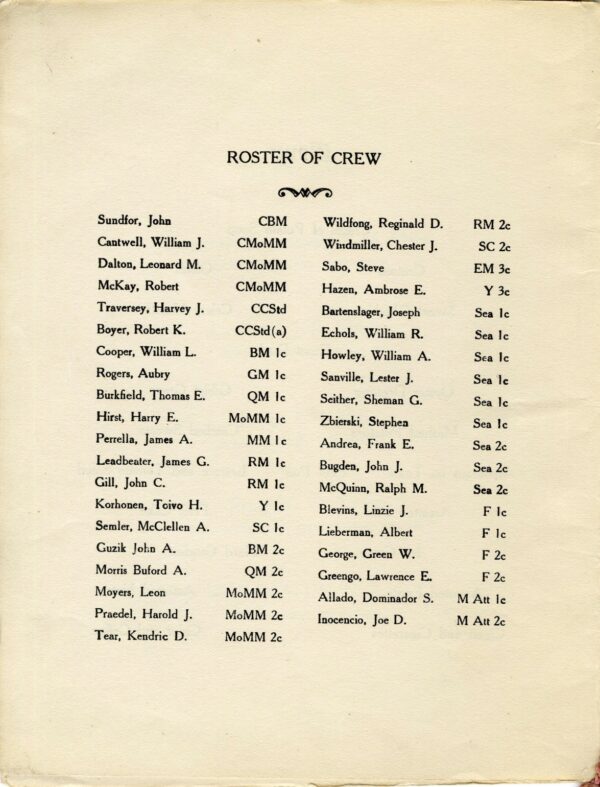
Campbell, 1940
In March 1940, Campbell departed on its first weather patrol cruise in the North Atlantic. Its primary mission was to identify foreign flag vessels, report on weather, and furnish Pan Am passenger planes with meteorological data and rescue services. On April 9, 1940, Germany seized Denmark, and Campbell was sent to Greenland at the request of the U.S. State Department in May. At this time, the United States’ primary interest in Greenland was defending a cryolite mine, providing ore used in aircraft production, and dislodging Nazi weather stations along Greenland’s northeast coast.
In December 1940, Campbell was stationed at Lisbon, Portugal. A Christmas menu from that year includes a crew roster on the back page. One crew member is listed only as “Sinbad.” He was a dog living on the streets of Staten Island in 1937 who snuck aboard. Sinbad was fiercely loyal to Campbell and its crew. Once, in Iceland, he overstayed his liberty and Campbell left without him. Sinbad discovered this when Campbell was about 400 yards out and barked ferociously. The crew spotted him and alerted the captain, who initially refused to turn around. When Campbell did not stop, Sinbad jumped into the icy waters and the cutter had no choice but to turn around.
In 1984, Campbell was sunk as a target for a missile test by the Navy in Hawaii after 46 years of service.
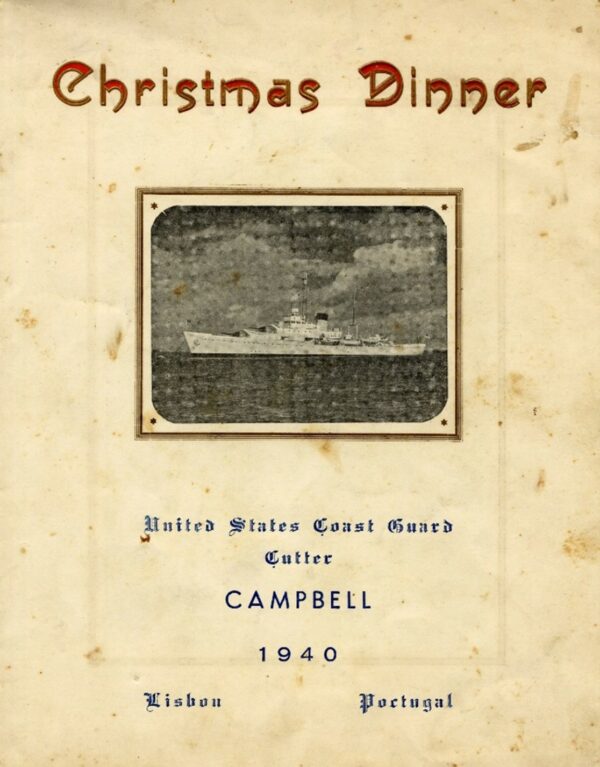
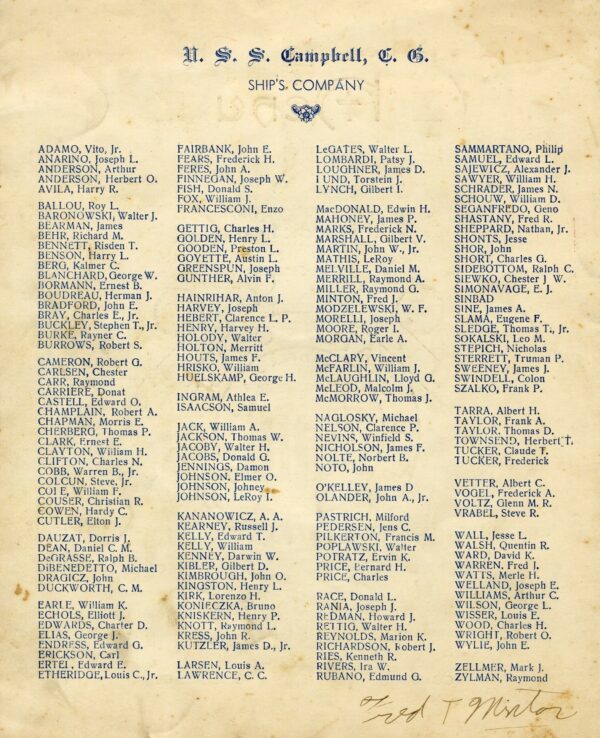

Taney, 1940
In 1940, Taney was stationed at Honolulu, Hawaii, undergoing its first major war rearmament. Its primary mission was to supply isolated Coast Guard stations along transpacific air routes and to relieve inhabitants of Kanton and Enderbury Islands in the South Pacific. On December 7, 1941, the cutter was moored at Honolulu when Japanese planes attacked Pearl Harbor. It fired on five enemy planes during the attack, which would draw the United States into World War II. Taney’s Hawaiian themed Christmas menus for 1939 and 1940 are in the Special Collections of the Coast Guard Historian’s Office, and the menu from 1940 is shown here.
Among the names on the crew roster in the Christmas menu is that of Lieutenant Frank A. Erickson. Enlisting in the Coast Guard in 1931, he became Coast Guard Aviator #32 in 1935 and Coast Guard Helicopter Aviator #1 in 1943. Erickson served on cutters before World War II and, on December 7, 1941, witnessed from Navy’s air control tower the attack on Pearl Harbor while he served as Taney’s aviation officer. In January 1944, Erickson flew the world’s first life-saving helicopter mission that delivered blood plasma to a stricken destroyer when fixed-wing aircraft were grounded by weather.
Taney was decommissioned in 1986 and now serves as a museum ship in Baltimore, Maryland.


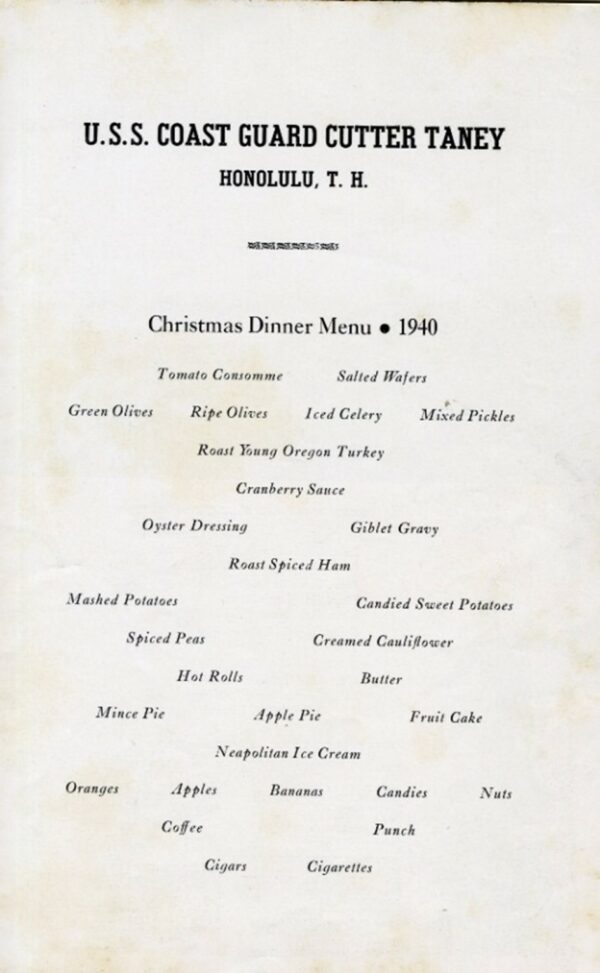
Onondaga, 1941
As a bonus, among the papers of LT Robert Prause in the Coast Guard Historian’s Office Special Collections, is a hand-drawn, pen-and-ink Christmas card. Dated 1941, the card depicts King Neptune sitting on Onondaga. At the time, Onondaga was stationed at Ketchikan, Alaska. A 1939 Coast Guard Academy graduate then Ensign Prause sent this card home to his parents. He had spent the previous year on a cadet recruiting tour and was considering sending this card to the schools he visited. Just three days after Christmas, on December 28, 1941, Prause was married to Phyllis Ash. Captain Hirshfield, previously of Campbell and now captain of Onondaga, was his best man. LCDR Hirshfield later received the Navy Cross Medal for wartime heroism and became Vice Commandant in 1954.
Onondaga was launched in 1934. In November 1941, it was transferred to the Navy and continued general patrol duty, with the base of operations between Seattle, Washington, and Ketchikan, Alaska. The American merchantman Mauna Ala went ground during a blackout test on December 10, 1941, at Clatsop Beach, Oregon, and Onondaga rescued 36 of the vessel’s crew. The cutter was decommissioned in July 1947.
Two and a half years later, on June 6, 1943, the cutter Escanaba, for unknown reasons, exploded and sank during Greenland Patrol duties. One-hundred and one members of its crew, including LT Prause, lost their lives. Only two survived.
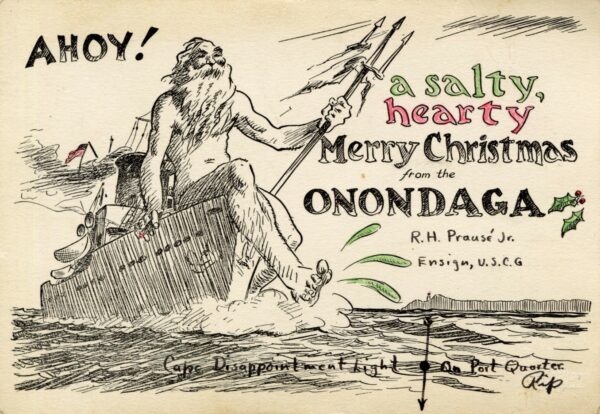
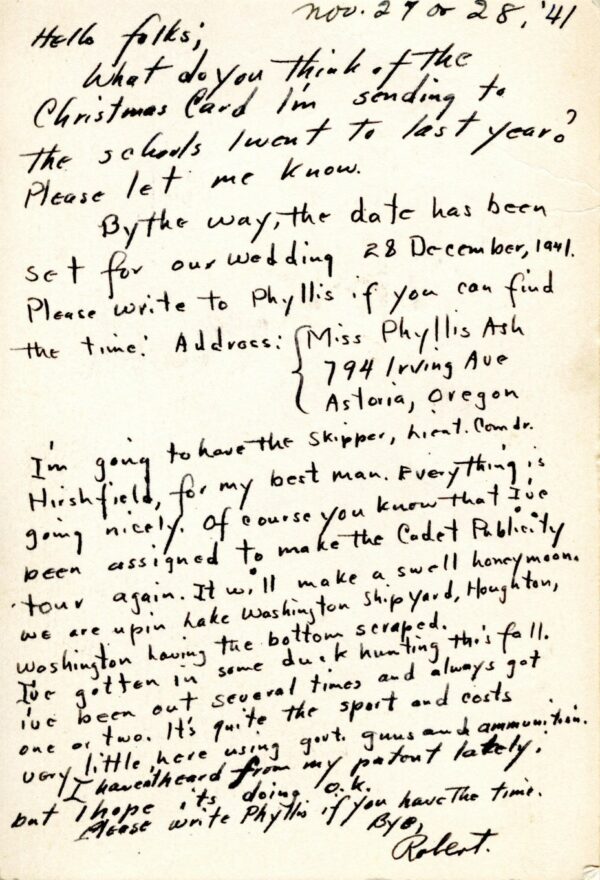
Christmas may be celebrated anywhere, even in wartime and in the middle of the ocean. Sailors aboard a cutter essentially comprise a family unit, and as long as one believes in the magic of Christmas, anything is possible. These menus of Christmases past also serve as mementos of Coast Guard Sea duty. More recent menus are not as elaborate or intricately detailed, probably as a cost-saving measure. However, the spirit of Christmas still remains on board for generations of seamen to come. It may be another day at sea, but Christmas will always mean home, wherever one is!
